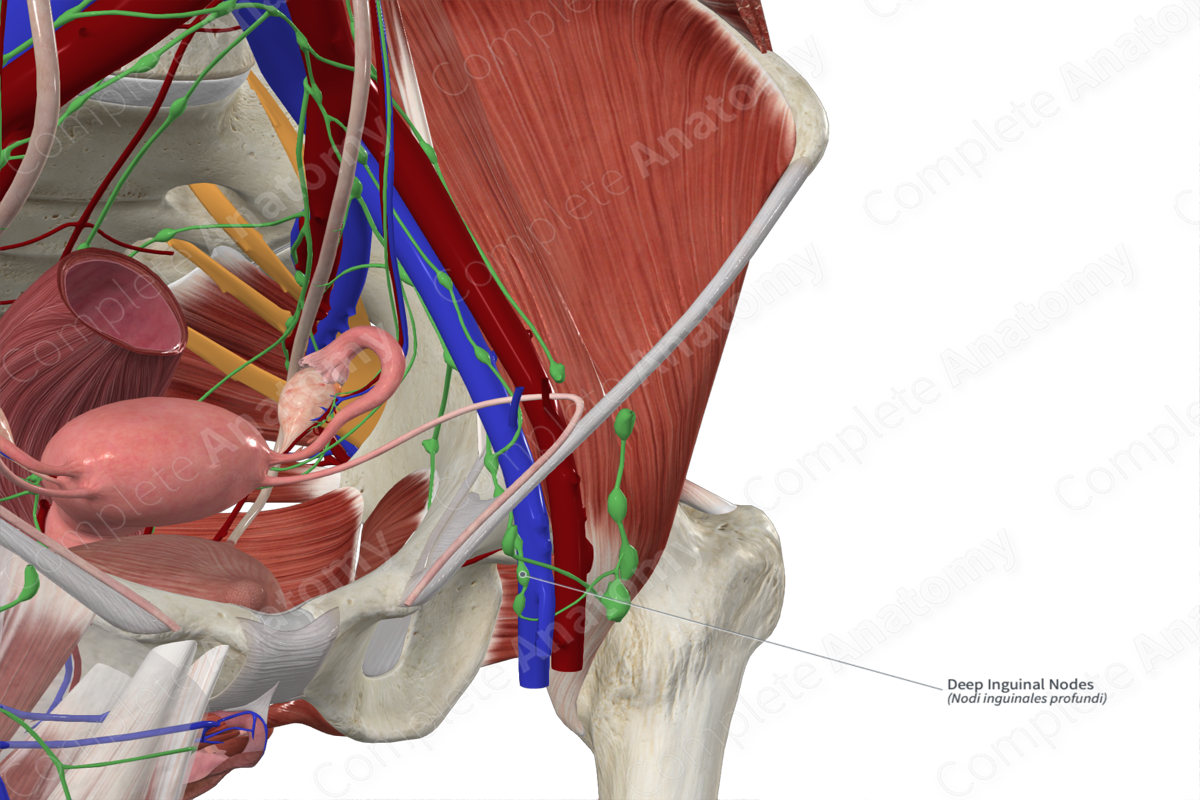
Quick Facts
Location: Along the femoral artery and vein.
Drainage: Muscles, joints, fascia, and periosteum of the lower limb, glans of penis or clitoris.
Direction of Flow: External iliac lymph nodes and deep inguinal lymph nodes > common iliac lymph nodes > lateral aortic lymph nodes (left) and lateral caval lymph nodes (right) > left and right lumbar lymph trunk > cisterna chyli > thoracic duct.
Description
The inguinal lymph nodes form deep and superficial groups.
The deep inguinal lymph nodes form a chain along the femoral artery and vein. These nodes continue superiorly as the medial external iliac nodes. Nodes within this group can be further subdivided into proximal, intermediate and distal deep inguinal lymph nodes. The most proximal node is the most consistently present node is located within the femoral ring. Cloquet Node or Rosenmüller Node is the alternative name given to the proximal deep inguinal lymph node only (Földi et al., 2012).
The deep inguinal lymph nodes drain the muscles, joints, fascia, and periosteum of the lower limb. They also receive lymph drainage from the superficial inguinal lymph nodes. Efferent vessels of the deep inguinal lymph nodes pass to the medial external iliac lymph nodes.
References
Földi, M., Földi, E., Strößenreuther, R. and Kubik, S. (2012) Földi's Textbook of Lymphology: for Physicians and Lymphedema Therapists. Elsevier Health Sciences.




